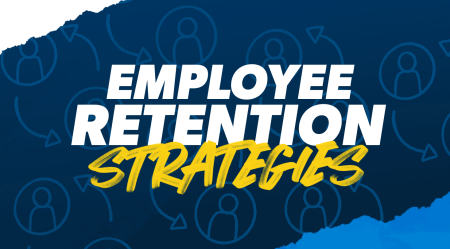When trying to ensure that your student’s lunch is nutritious, delicious, and varied. However, with a little foresight and some clever strategies, you can save significantly on groceries while providing your child with meals that they’ll enjoy and that will keep them fueled throughout the school day. Here are some practical tips to help you get started.
Embrace the Power of Planning
The first step in meal planning on a budget is to plan ahead. Spend some time each week creating a lunch menu for the coming days. This doesn’t have to be a complex task; simply jot down ideas for each day’s lunch. Having a plan will prevent last-minute decisions that often lead to overspending. Moreover, it allows you to make the most of sales and discounts.
When planning, consider the nutritional needs of your student. Aim for a balance of proteins, carbohydrates, fruits, and vegetables. For instance, a turkey and cheese sandwich on whole grain bread, paired with apple slices and carrot sticks, provides a well-rounded meal. Incorporate your child’s preferences to ensure that the lunches won’t end up uneaten.
Shop Smart and Save
Grocery shopping can be a significant expense, but there are ways to keep costs down. Start by making a shopping list based on your meal plan. Stick to the list to avoid impulse buys. Look for sales, discounts, and coupons. Many stores have loyalty programs that offer additional savings.
Buying in bulk can also be cost-effective, especially for non-perishable items like canned goods, pasta, and rice. For perishable items, such as fruits and vegetables, consider purchasing what’s in season, as these tend to be cheaper and fresher. Farmer’s markets can offer great deals on seasonal produce.
Use Fruits and Vegetables That Are In Season
Seasonal produce is usually more affordable compared to imported options. Research online to discover what produce is currently in season in your area. Plan your meals around these seasonal ingredients, find recipes, or save money by purchasing them in bulk and freezing them for later use in your child’s school lunches. Incorporating seasonal fruits and vegetables into your child’s meals not only saves money but also introduces them to a variety of flavors and nutrients that are at their peak.
Visit local farmers’ markets with your children. This can be a fun educational experience for your child, teaching them about where their food comes from and the importance of supporting local agriculture.
By factoring in seasonal produce while meal planning on a budget, you’re not only providing nutritious meals for your family but also making environmentally conscious choices that support local farmers and reduce your carbon footprint.
Cook Once, Eat Twice
Another great way to save on groceries is to cook larger meals and use the leftovers. For example, if you make chicken and rice for dinner, the leftovers can be used for chicken fried rice for lunch the next day. Get creative, check online for recipes that utilize your leftovers. This not only saves money but also reduces the time spent preparing meals.
Batch cooking and freezing portions is another strategy. Spend a few hours on the weekend preparing a variety of meals that can be stored in the freezer. This ensures that you always have something ready to go on busy mornings. Items like soups, casseroles, and pasta dishes freeze well and can be easily reheated. You can also freeze protein items that can be repurposed later in other dishes. For example, you find family packs of chicken breast on sale and decide to bake them and individually package them in reusable containers. Simply defrost precooked chicken breasts for sandwiches, salads, wraps, sliders, and burritos.
Get Creative with Ingredients
Being creative with ingredients can help reduce costs while keeping lunches interesting. Instead of buying pre-packaged snacks, make your own. For instance, purchase a large container of yogurt and portion it out into smaller containers, adding fresh fruit or granola. This is often cheaper than buying individual servings.
Similarly, consider making your own granola bars, trail mix, or baked goods. Not only can this be more economical, but it also allows you to control the ingredients, ensuring healthier options. Use up leftovers creatively, such as turning yesterday’s roasted turkey into a tasty wrap or creating a new salad.
Involve Your Student
One of the best ways to ensure that lunches are eaten and enjoyed is to involve your student in the meal planning process. Take them grocery shopping and let them help select fruits, vegetables, and other ingredients. When children have a say in what they eat, they are more likely to be enthusiastic about their meals.
Additionally, involve them in the preparation. Simple tasks like washing fruits, spreading peanut butter, or assembling sandwiches can be fun and educational. This not only helps in preparing meals more quickly but also teaches them valuable life skills.
Focus on Reusables
Investing in reusable containers can be a smart move both financially and environmentally. Instead of constantly buying plastic sandwich bags and disposable containers, opt for durable, reusable lunch boxes, snack bags, and water bottles. These items may have an initial cost but will save money in the long run and reduce waste.
Final Thoughts
Meal planning on a budget doesn’t have to be overwhelming. By planning ahead, shopping smart, cooking efficiently, and getting creative, you can save money while providing nutritious and appealing lunches for your student. Involving your child in the process can make it a fun and educational experience for both of you. Remember, a little bit of preparation can go a long way in ensuring that you stay within your budget while maintaining the quality and variety of your child’s meals.
By implementing these strategies, you’ll find that meal planning on a budget can be both manageable and rewarding. You’ll save money, reduce food waste, and provide your student with delicious, nutritious meals that will keep them energized and ready to learn. Happy meal planning!
If you’re struggling to pay off debt, ACCC can help. Schedule a free credit counseling session with us today.
Read the full article here












